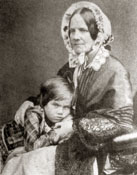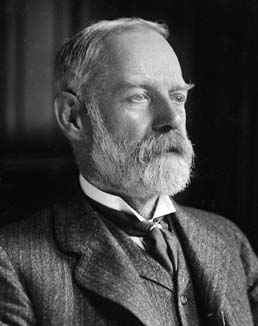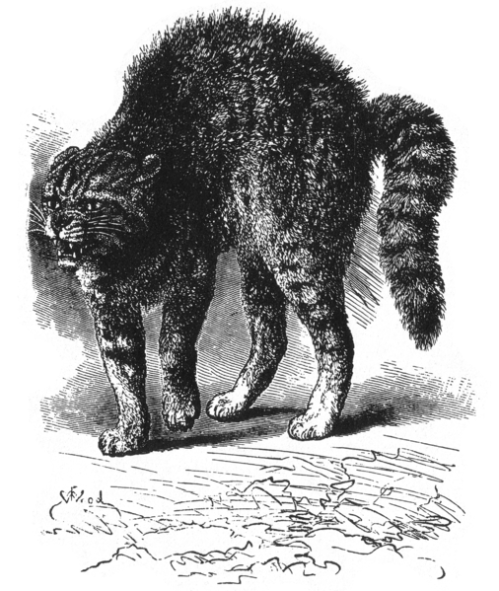 Charles Darwin was not just a eminent Naturalist – he was also the head of a thriving family economy who drew on the help of his relatives at any (and, it seems, every!) opportunity. His eldest son, William, was regularly tasked with observing plants and animals for him, while Charles’ second son, George, helped him with complex maths problems. Francis, meanwhile, was always on hand to check and correct Darwin’s mediocre Latin.
Charles Darwin was not just a eminent Naturalist – he was also the head of a thriving family economy who drew on the help of his relatives at any (and, it seems, every!) opportunity. His eldest son, William, was regularly tasked with observing plants and animals for him, while Charles’ second son, George, helped him with complex maths problems. Francis, meanwhile, was always on hand to check and correct Darwin’s mediocre Latin.
Darwin’s women relatives weren’t left out; his daughter, Henrietta, acted both as an observer and a trusted editor, while his wife, Emma, would copy out his manuscripts and check his proofs. As Francis Darwin recalled, Emma would read Charles’ work, “chiefly for misprints and to criticise punctuation; & then my father used to dispute with her over commas especially”. [1]
Darwin’s workforce wasn’t limited to his nuclear family; he also drew on the advice of his cousin, on the observational skills of his nieces and, later in life, on the advice of Henrietta’s husband and the observational skills of Francis’ fiancée.
Darwin’s work, then, was the product of a collective familial effort and his private letters suggest that he was extremely grateful for the contribution made by his relatives; “All your remarks, criticisms doubts & corrections are excellent, excellent, excellent”, he told Henrietta in 1867. “My dear Angels!,” he wrote to his nieces in 1862, “I can call you nothing else.—I never dreamed of your taking so much trouble; the enumeration will be invaluable.”
While Darwin clearly valued the work of his relatives regardless of their sex, in the public sphere the case was very different. Thus, while the contributions of Charles’ male relatives were methodically acknowledged in his published works, the input of women was not.
 In his 1862 publication The Fertilisation of Orchids, for example, Charles publicly acknowledged the observational contributions made by “my sons” George (p. 16), William (p. 99) and Francis (p. 273). Charles was careful to acknowledge his sons’ work in all of its forms; regular – and notably proud – references were made in Insectivorous Plants, for example, not just to his boys’ skills of observation but also to other sorts of labour, including the illustration of botanical diagrams (p. 3) and mathematical skills (p. 173).
In his 1862 publication The Fertilisation of Orchids, for example, Charles publicly acknowledged the observational contributions made by “my sons” George (p. 16), William (p. 99) and Francis (p. 273). Charles was careful to acknowledge his sons’ work in all of its forms; regular – and notably proud – references were made in Insectivorous Plants, for example, not just to his boys’ skills of observation but also to other sorts of labour, including the illustration of botanical diagrams (p. 3) and mathematical skills (p. 173).
Charles was equally careful to acknowledge the contributions – however fleeting – of other male family members. Richard Litchfield’s contribution to a discussion of music (discussed in this letter), for example, was carefully referenced in Expression (p. 89). Similarly, Hensleigh Wegwood – Darwin’s cousin – was acknowledged for the contribution that he made (discussed here) to a section on language in Descent (p. 56).
Darwin’s published materials give only a partial insight, however, into the workings of the Darwin family economy. Indeed, without Darwin’s letters, a large and significant part of his workforce would remain entirely invisible. The key question, of course, is why did Darwin’s female workforce remain invisible to the public eye?
 It wasn’t, it seems, an issue of trust: Evidence shows very clearly that Charles respected the work undertaken by his women relatives. Henrietta’s observations of domestic cats and her (and her female friends’) observations of babies, for example, both featured (albeit anonymously) in Expression of Emotion. [2] Samples and observations provided by Lucy Wedgwood were similarly referenced in Forms of Flowers (p. 70), referred to simply (and anonymously) as having been provided by “a friend in Surrey”.
It wasn’t, it seems, an issue of trust: Evidence shows very clearly that Charles respected the work undertaken by his women relatives. Henrietta’s observations of domestic cats and her (and her female friends’) observations of babies, for example, both featured (albeit anonymously) in Expression of Emotion. [2] Samples and observations provided by Lucy Wedgwood were similarly referenced in Forms of Flowers (p. 70), referred to simply (and anonymously) as having been provided by “a friend in Surrey”.
It seems, then, that Charles’ anxiety lay not with the type or quality of work that his women relatives produced but with the consequences of making that work public. At a time when a middle class woman’s femininity was measured by her modesty and unwavering dedication to the well-being of her home and family, Darwin’s concerns about making the work of his daughter, wife and other female relatives public were, on some level, entirely understandable.
[1] The recollections of Francis Darwin; CUL DAR 112:144.
[2] See, for example, Expression, pp. 126 – 9. See also letter 5332 and 7153 in which Henrietta and Mary Lubbock provide observations which fed into Expression (p. 153). Henrietta’s observations on house cats’ cries from DAR 189:7 are also mentioned on p. 60 of Expression).



